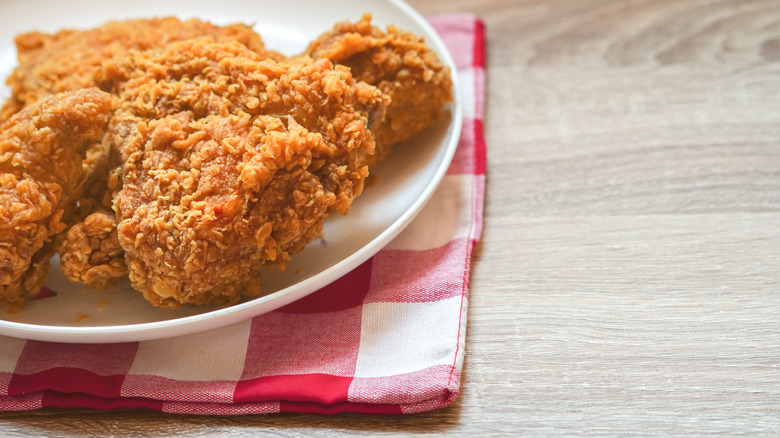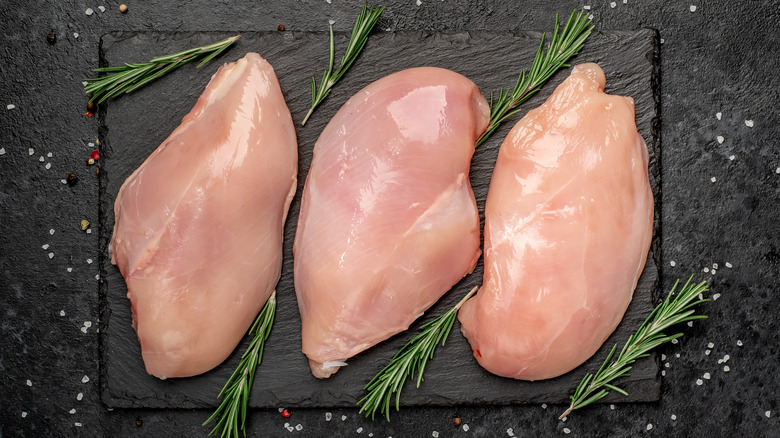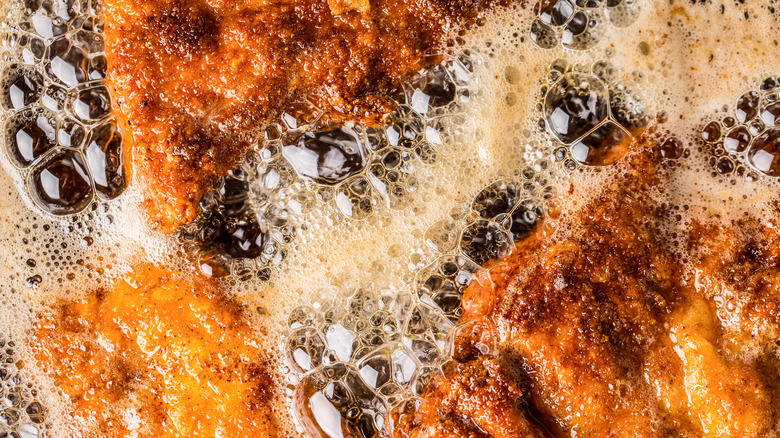How To Prevent Fried Chicken Breast From Drying Out
We may receive a commission on purchases made from links.
Any time you decide to cook the breast over any other cut of chicken, you risk ending up with a dry piece of meat. That's because, as MasterClass explains, chicken breast is a form of white meat. Whereas dark meat contains about 50% red muscle fibers, white meat is made up of only 10%. And since red muscle fibers are made up of fat and protein, dark meat is naturally more flavorful. Plus, when you cook it, it stays moist, while white meat tends to dry out because of how lean it is.
For the same reason, frying chicken breast is no easy task. According to Serious Eats, frying works by drawing out moisture. Less moisture equals a crispy texture, which is exactly what you want in fried chicken. But, because chicken breast already has very little moisture, the frying process can easily render it dry on the inside.
Juicy fried chicken breast, however, isn't impossible as long as you prepare it properly.
Slice your chicken breast before frying
The more you fry chicken, the drier it becomes, and chicken breasts happen to be really easy to overcook, Craving Tasty notes. Ever fry your chicken breast only to find out that it's perfectly cooked on one end, but still needs cooking on the other? This outcome is the result of chicken breasts being a naturally uneven shape that leads to overcooking and dryness. The best way to combat this is to cut the chicken breasts strategically. Adapting a Balkan cooking method, Craving Tasty suggests scoring the meat on one side so the heat can more effectively access the inside, ultimately allowing it to cook through evenly.
Southern Living's recommended method works just as well. Before dredging it in egg wash and flour, you'll want to slice each chicken breast diagonally. The meat will have a more leveled out shape. And, as a result, all parts of the cut will finish cooking at the same time, reducing the risk of dryness.
Chicken breast is more sensitive to heat
Dark meat, given its higher moisture content, can withstand higher levels of cooking, MasterClass shares, but there's much less leeway with chicken breast. Especially since chicken breast can vary in thickness, guessing when your chicken breast is done frying is never a good idea. Instead, as A Family Feast shares, you'll want to use an instant-read thermometer. Make sure the oil is 325 degrees Fahrenheit and that the chicken sits in it until it's 155 degrees Fahrenheit on the inside. After resting, the chicken will reach 165 degrees Fahrenheit and be fully cooked yet still juicy.
If you don't have a thermometer, time can also be a solid indicator of doneness, Budget Bytes says. However, it changes according to the size, whether you're pan frying or deep frying, or if you're using boneless rather than bone-in chicken breasts. Per one-inch of thickness, Budget Bytes recommends 8 minutes of frying per side on medium-low. Thicker or bone-in chicken breasts will require slightly more time, so you'll ultimately have to use the brownness of the crust as an indicator. Just keep in mind that if chicken breast gets any hotter than 165 degrees Fahrenheit internally, it will begin to dry out, so try not to fry it any longer than you need to.


